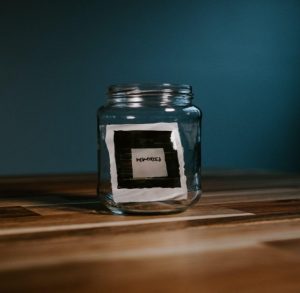
Written by Stephanie Keesey-Phelan, Ph.D., BCBA, LABA
Do you remember your first kiss? What about that trip you took two years ago, or your first day of school? Where were you when 9/11 happened? How did you feel? The things we remember, our memory in general, are a crucial part of our everyday lives. We often spend a great deal of time in our memories reliving important or impactful moments from our past. We fill our homes with photographs and objects all in service of keeping our fondest memories and loved ones close. This feels even more relevant now amidst a global pandemic when many of us are spending more time at home and less time out in the world.

We know memory is important because we have lived through or heard about the devastation of a family member or friend who begins to lose theirs. This loss may be a result of the passage of time and dementia, diseases like Alzheimer’s, neurological conditions, or traumatic brain injury. It is utterly heartbreaking when they can no longer remember your name or who you were to them. As a result, decades of research have been centered upon finding a cure. In my work as a Behavior Analyst, I had the privilege to work with a number of Autistic children and teens who struggled to recall details of their daily lives. When their parents or friends tried to sustain a conversation about something that happened to them in the past, whether weeks, months, or even just hours ago, they had little to contribute, resulting in confusion, concern, and ultimately decreased social interactions.
Given everything that depends on them, our memories are clearly critical to our day-to-day lives and relationships. But what is memory? Researchers and philosophers alike have been examining this question for hundreds of years from a number of different angles. We know there are critical structures in the brain that facilitate memory. When these structures (like the hippocampus, which is a part of the brain implicated in spatial memory) are disrupted, so is memory. This finding helps support one of the most common conceptual paradigms of memory – that memories are like computer files. We have them and we store them in our brains. When these important areas of the brain are damaged or otherwise altered, we may lose the memories we have or stop making new ones.
But we also know that memory is more than just the brain structures behind it. A single google search easily pulls up hundreds of different programs to help “improve your memory” and studies like this one showed that learning a new skill improves your memory compared to other tasks. These findings suggest that memory is more than our brain structures – and this is where Behavior Analysis comes in. Behavior Analysts are scientists who study behavior and how behavior is impacted by the environment. From a behavioral standpoint, memories can be approached not as things that we have tucked away in the folds of the hippocampus, but as behaviors that we engage in. In the field of Behavior Analysis we don’t study memories, we study remembering.
To examine the behaviors of remembering, we can begin with the consideration of a simple question: What did you have for breakfast last Tuesday? When you’re working to answer this question, think about what it is that you’re actually doing. If you asked me what I had for breakfast last Tuesday, here are some of the steps I would engage in to answer the question:
- First visualize my calendar.
- Ask myself: What day was last Tuesday?
- Answer myself: It was November 16th.
- Ask myself: What do I usually do on Tuesdays?
- Answer myself: I get up early for a doctor’s appointment that I have to be at by 7:30 am.
- This makes me think: Because I have to get up early, I don’t eat breakfast before I leave on Tuesdays.
- This makes me think: I get breakfast at the Starbucks by the doctor’s office after my appointment.
- I answer the question: I had a blueberry muffin and a chai tea latte from Starbucks for breakfast last Tuesday.
Everything I described on my way to answering the question, all of that thinking, is behavior! I visualized, I asked myself questions, I answered those questions, and I made some associations (i.e., Tuesday = doctor’s appointment = no breakfast at home). Each individual will have their own strategies for answering a question like this, but regardless of strategy these are all behaviors that help us get to the answer, the remembering. This is also a special type of memory that has been referred to as problem-solving memory (Palmer, 1991). We can also consider other types of remembering behaviors such as when you remember rote facts or knowledge. One example would be if I asked you “What is two times two?” You would remember, easily providing the answer: “Four.”

When we look at memory in this way we can design teaching strategies that facilitate the behaviors of remembering. In a series of studies, one researcher created wallets full of photographs and facts about those photographs to help patients with Alzheimer’s disease engage in conversations about their lives (Bourgeois, 1990,1992; Bourgeois et al., 2001). The results of these studies showed increased quality and length of their conversations. In one study that I worked on (Keesey-Phelan, Axe, & Williams, in preparation), we taught Autistic children to imagine a place where they completed a fun activity and then ask and answer seven questions about the activity in order to remember it in greater detail. For two participants who completed the study, when they were asked about the activity approximately two hours later, they provided more statements and greater detail. In a second study (Keesey-Phelan et al., in preparation), we taught Autistic children to talk about activities they were currently completing while they were completing them. We found that increasing their discussion about the activity, along with extra rewards for memory statements, improved their later recall of that activity. These studies only scratch the surface as to what is possible with a behavior analytic approach to memory.
All of this is not to say that the brain is irrelevant! Of course, each individual’s recall is going to be limited by the functioning of the parts of the brain that facilitate remembering. But as Behavior Analysts, when we look at memory as a behavior, we can create teaching procedures to help those who struggle with memory. Remembering enriches us, helps us develop strong relationships, and maintains the thread of the story of our lives. When we view memory as behavior, we are empowered to restore some of that identity for the people we work with.

Dr. Stephanie Keesey-Phelan is a Board Certified Behavior Analyst and Licensed Applied Behavior Analyst. She earned her Bachelor of Science degree in Animal Behavior from the University of Connecticut. In 2011, Dr. Keesey-Phelan began her formal training in behavior analysis at Simmons College. During this time, she worked with Autistic children and teens, and others with developmental disabilities. Dr. Keesey-Phelan completed her Master’s Degree in Behavior Analysis in 2013 from Simmons University in Boston, MA and went on to complete her Ph.D. in Behavior Analysis in 2020 also at Simmons University. Her dissertation was centered around memory and how to teach Autistic children to report past events.
Dr. Keesey-Phelan currently works within the field of Applied Animal Behavior and co-owns The Dog Behavior Institute with fellow Behavior Analyst, Ran Courant-Morgan: In addition to her work at the Dog Behavior Institute, Dr. Keesey-Phelan is also an adjunct faculty teaching behavior analytic coursework at Simmons University and Regis College.

